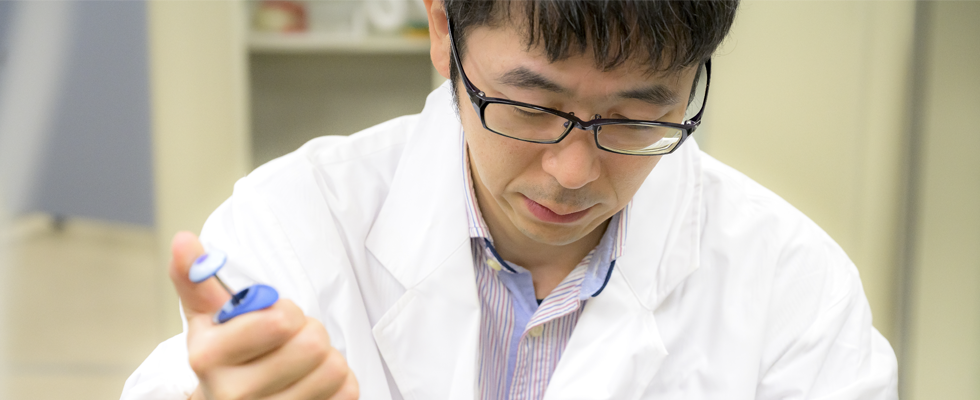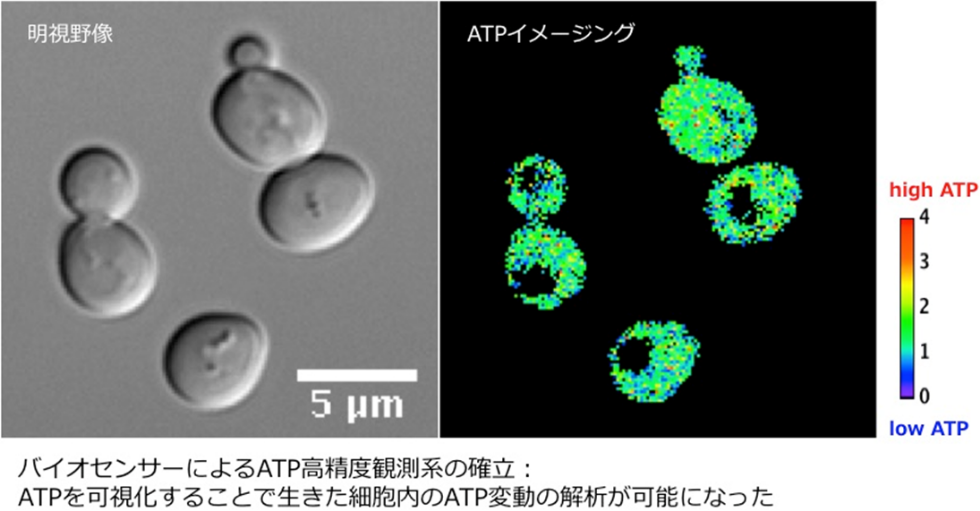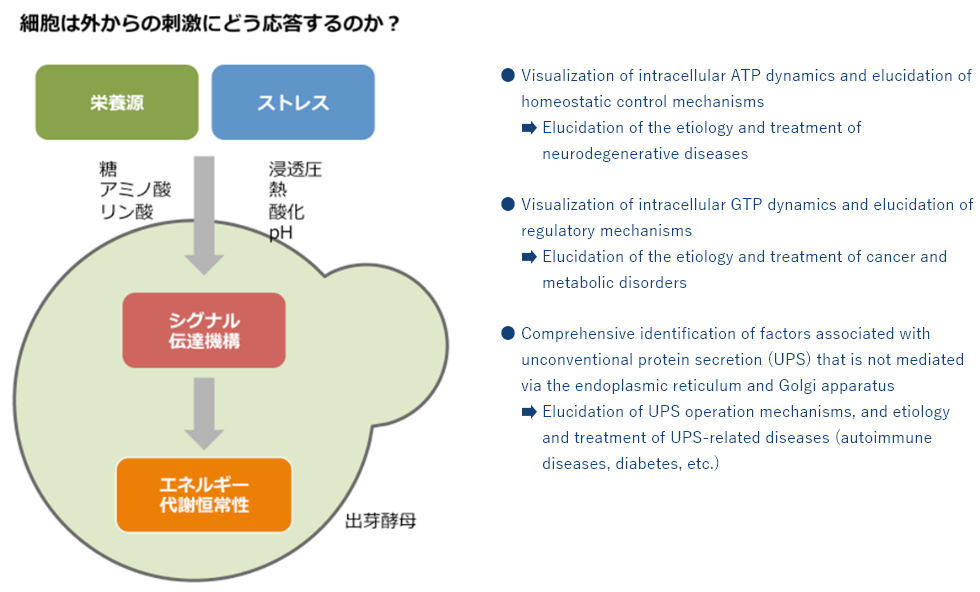
Research on intracellular metabolic dynamics
How is intracellular energy maintained?
We elucidate the mechanisms that are required for maintaining “healthy” cells.
Cell biology and metabolism
Energy metabolism, signal transduction, aging, ATP, yeast
Cells are constantly under stress due to changes in the external environment. Examples of cellular stress include osmotic changes, temperature changes, and oxidative stress. Changes in the amount of nutrients can also be considered a type of stress. If cells cannot respond appropriately to such external stimuli and the intracellular metabolism cannot be maintained, then they will be damaged and malfunctions will occur, or they will age, and sometimes they will die. Therefore, it is expected that detailed knowledge of the mechanisms through which cells respond to the outside world can be applied for the development of treatment methods for lifestyle-related diseases and cellular aging as a result of cell malfunction.
By using budding yeast Saccharomyces cerevisiae, which is an ideal eukaryotic cell model, we want to elucidate molecular mechanisms through which cells maintain metabolic homeostasis (the property and ability to maintain a constant state) and try to adapt when responding to various environmental changes. Among many kinds of metabolic reactions, we are currently focusing on the energy metabolism, which is necessary to produce energy in vivo, and are analyzing in detail the intracellular dynamics of adenosine triphosphate (ATP), which is called the energy currency of the living body. A disruption of the energy metabolism is a factor that causes the pathogenesis of various diseases including cancer, and therefore we believe that it is important to understand such mechanisms in order to apply them for medical treatment.

Cells are constantly exposed to various stimuli such as environmental stress and nutrient sources, and if they cannot appropriately respond to such external stimuli, they will be damaged, and this will result in cellular aging or lead to cell death. Therefore, a detailed understanding of cellular response mechanisms is necessary for the development of treatments for lifestyle-related diseases and aging.
Using the budding yeast Saccharomyces cerevisiae, which is an ideal eukaryotic cell model, we want to elucidate at the cellular level molecular mechanisms through which cells maintain homeostasis of the energy metabolism, and try to adapt when responding to various environmental changes.
